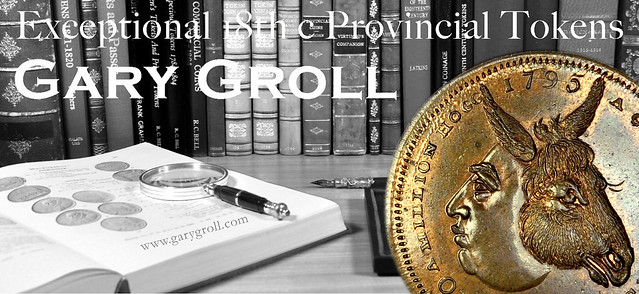
PREV ARTICLE
NEXT ARTICLE
FULL ISSUE
PREV FULL ISSUE
VOCABULARY TERM: MELTINGDick Johnson submitted this entry from his Encyclopedia of Coin and Medal Terminology. Thanks. -Editor Melting. Destruction of existing coins and medals or metallic artifacts for recovery of the metal content. Precious metal numismatic objects are extremely vulnerable – gold particularly so – to intentional melting for the salvage value of the metal. This occurs for political reasons, like war funding drives, as well as economic reasons, like a rise in the price of metal greater than the face value of the coin, or the value the object is made from. In several wars, Germany offered iron medals and jewelry items in exchange for gold objects to fund the costs of warfare. On the other hand, an attempt in 1980 by the Texas Hunt brothers to corner the world supply of silver, the price rose to over $55 per ounce. As a result tons of silver medals, along with other silver objects were destroyed in what was called "the great silver melt." The economic rule of Gresham's law – bad money drives out good money – applies when the bullion value of coins is greater than their face value; they end up in the melting pot. Infrequently a recoinage is required where all old coins are recalled and new coins struck (recoin) and issued. For many mints of the world, particularly early in their existence, their only source of coinage metal is melting coins of other nations. At times when a supply of silver is not readily available, silver coins are melted to be fashioned into silverware and silverplate. This occurred in the United States prior to the discovery of silver deposits in the West. The term coin silver was applied to these items made from melted silver coins. In other instances, unsold or undistributed numismatic items are infrequently melted to recover their salvage metal value (as with so many commemorative half dollars in the 1930s in the United States). Worn-out and withdrawn coins are melted to end the normal life-span of coins. Compare remelt. Numismatic items made from melted objects. An entire class of numismatic items are made from relic metal where the original object is melted and coins or medals are made from this composition, often identified on the numismatic item. Since the inscription often states "made from" collectors often call these "made froms," but numismatists refer to them as relic items, see relic metal. In other instances discarded metal is made into numismatic items. Spent shell casings are an excellent example. Following World War II tons of brass casings were sent to the U.S. Mints and were struck into cents without reformulating the metallic composition. After the Korean and Vietnam Wars, enterprising people in these countries collected shell casings, melted them and cast into numismatic objects. These included plates (cast and the edges spun to make into a plate) with portraits of Americans they could sell to servicemen, including John F. Kennedy and Martin Luther King Jr. And The First Medal of Dishonor Goes To... If there was ever a Medal of Dishonor the first recipient should be Annie Oakley (real name: Phoebe Anne Oakley Mozee, 1860-1926). She won dozens of gold medals for her amazing marksmanship. Late in life she had them all melted, sold the gold and gave the money to charity. (She should have, of course, sold the medals to collectors and received far more than the gold content! Here's a passage I found in The Life and Legacy of Annie Oakley By Glenda Riley, 1994. It's quite a shame the medals no longer survive. -Editor "In February 1887, a gun club in Pine Brook, New Jersey, presented Oakley with another handsome gold medal inscribed from "her many friends and admirers." Then, during the summer of 1887 the Notting Hill Gun Club in London gave her a gold medal, the first it ever presented, with an engraving of the Notting Hill grounds on its face and with an inscription on its clasps, "Presented to Miss Annie Oakley by the members of the London Gun Club, June 11, 1887." When Annie later shot in Marseilles, France, she received three medals in three weeks." Looking for the meaning of a numismatic word, or the description of a term? Try the Newman Numismatic Portal's Numismatic Dictionary at: https://nnp.wustl.edu/library/dictionary Or if you would like a printed copy of the complete Encyclopedia, it is available. There are 1,854 terms, on 678 pages, in The Encyclopedia of Coin and Medal Technology. Even running two a week would require more than 19 years to publish them all. If you would like an advance draft of this vital reference work it may be obtained from the author for your check of $50 sent postpaid. Dick Johnson, 139 Thompson Drive, Torrington, CT 06790. 
Wayne Homren, Editor The Numismatic Bibliomania Society is a non-profit organization promoting numismatic literature. See our web site at coinbooks.org. To submit items for publication in The E-Sylum, write to the Editor at this address: whomren@gmail.com To subscribe go to: https://my.binhost.com/lists/listinfo/esylum All Rights Reserved. NBS Home Page Contact the NBS webmaster 
|